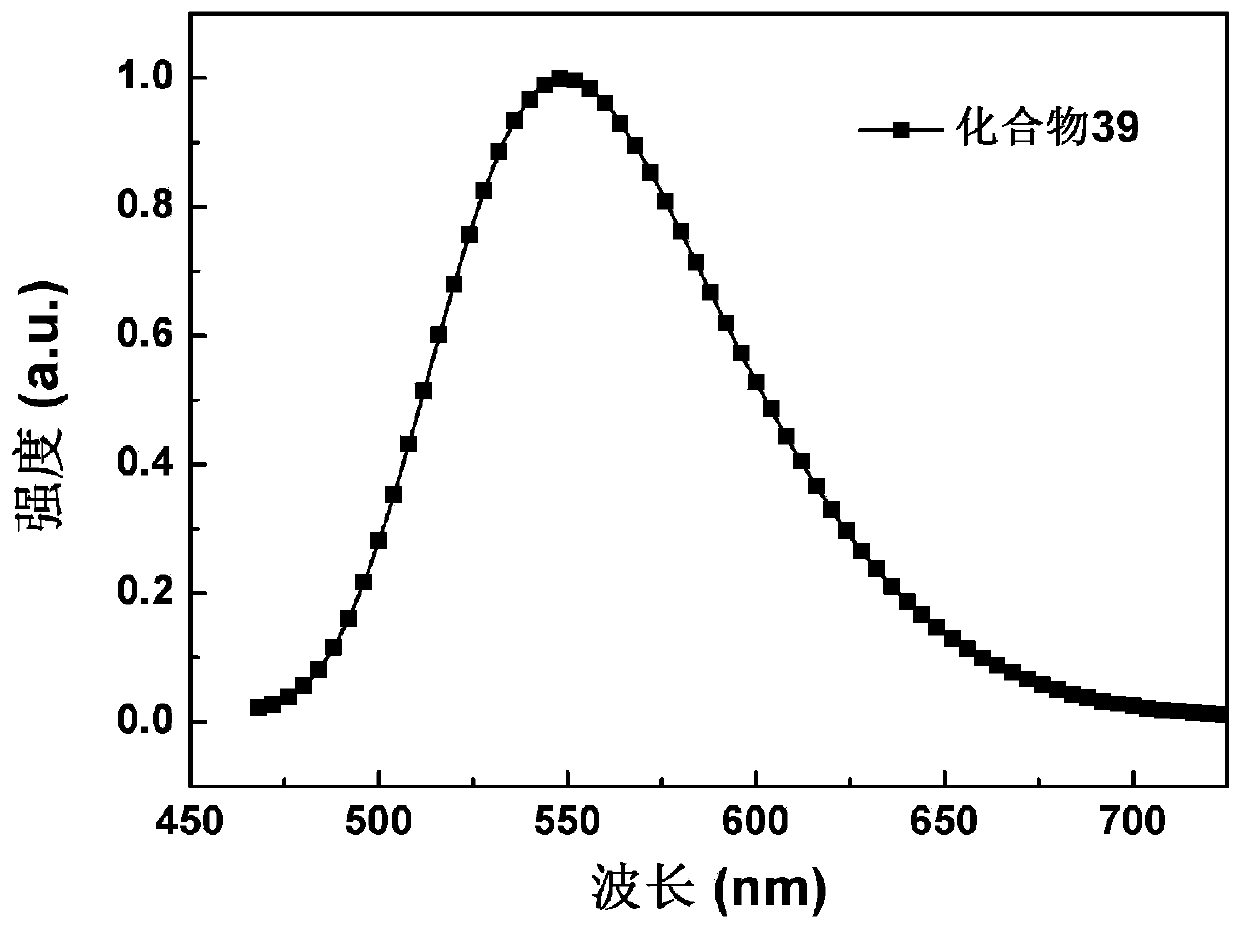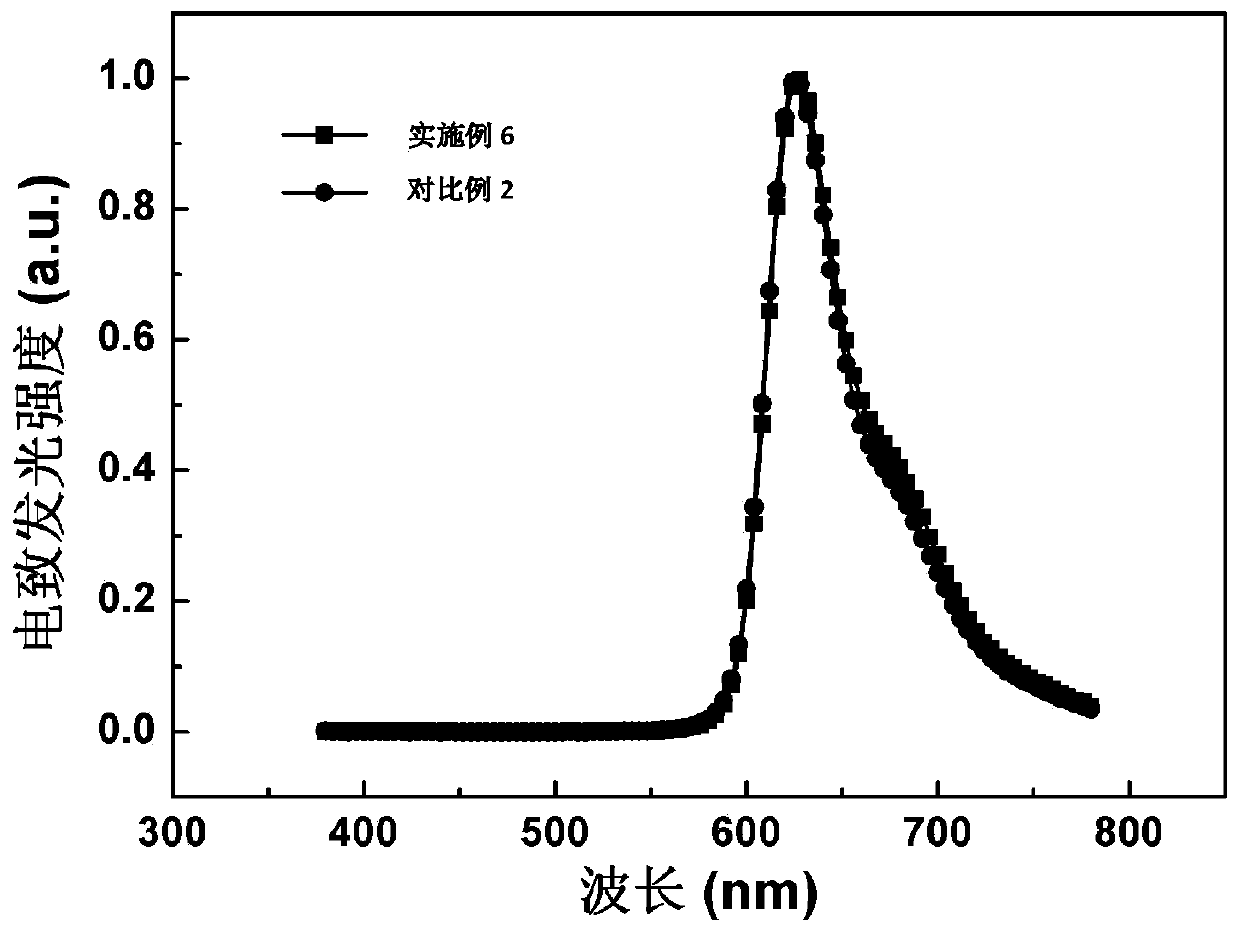3,4-diazafluorenone derivative, synthesis method thereof, and electronic device containing 3,4-diazafluorenone derivative
An electronic device and a technology of heterofluorenone are applied in the field of organic optoelectronic materials to achieve the effects of improving electron transmission efficiency, improving luminous efficiency and reducing driving voltage
- Summary
- Abstract
- Description
- Claims
- Application Information
AI Technical Summary
Problems solved by technology
Method used
Image
Examples
Embodiment 1
[0143] Embodiment 1: the synthesis of compound 39
[0144] (Synthesis of Intermediate 1-1)
[0145] The synthetic route of intermediate 1-1 is as follows:
[0146]
[0147] Add ninhydrin (3.6g, 20mmol), 4-bromoacetophenone (4.0g, 20mmol), and 120mL acetic acid successively into a 250mL one-necked flask, and react under reflux for 4 hours. After the reaction was completed, it was cooled to room temperature. 2 mL of hydrazine hydrate (85 wt%) was added dropwise and the reaction was continued overnight at room temperature. The solid was collected by suction filtration and washed with a small amount of absolute ethanol. The crude product was further purified by column chromatography (petroleum ether:dichloromethane=1:1 (V / V)). The solvent was evaporated, and after drying, 3.3 g of a yellow solid was obtained with a yield of 49%. MS(EI): m / z: 337.10[M + ]. Anal.calcd for C 17 h 9 BrN 2 O (%): C 60.56, H 2.69, N 8.31; found: C 60.55, H 2.72, N 8.29.
[0148] (Synthesis...
Embodiment 2
[0152] Embodiment 2: the synthesis of compound 50
[0153] (Synthesis of compound 50)
[0154] The synthetic route of compound 50 is as follows:
[0155]
[0156] Under nitrogen protection, intermediate 1-1 (1.7g, 5mmol), bis(4-biphenyl)amine (1.7g, 5.2mmol), palladium acetate (11mg, 0.05mmol), palladium acetate (11mg, 0.05mmol), Tri-tert-butylphosphine tetrafluoroborate (29mg, 0.1mmol), sodium tert-butoxide (960mg, 10mmol) and 120mL toluene were stirred under reflux for 12 hours. After the reaction was complete, the solvent was evaporated, the residue was dissolved with 200 mL of dichloromethane, washed with water, the organic layer was separated, the aqueous layer was extracted twice with 15 mL of dichloromethane, and the organic layers were combined. After distilling off the solvent, the residue was separated by column chromatography (petroleum ether:dichloromethane=3:1 (V / V)). The solvent was evaporated, and after drying, 2.1 g of an orange-yellow solid was obtained ...
Embodiment 3
[0157] Embodiment 3: the synthesis of compound 130
[0158] (Synthesis of Intermediate 1-2)
[0159] The synthetic route of intermediate 1-2 is shown below:
[0160]
[0161] Add ninhydrin (3.6g, 20mmol), 5-acetyl-2-bromopyridine (4.0g, 20mmol) and 120mL acetic acid successively into a 250mL one-necked flask, and react under reflux for 4 hours. After the reaction was completed, it was cooled to room temperature. 2 mL of hydrazine hydrate (85 wt%) was added dropwise and the reaction was continued overnight at room temperature. The solid was collected by suction filtration and washed with a small amount of absolute ethanol. The crude product was further purified by column chromatography (petroleum ether:dichloromethane=1:1 (V / V)). The solvent was evaporated, and after drying, 3.6 g of a yellow solid was obtained, yield 53%. MS(EI): m / z: 338.04[M + ]. Anal.calcd for C 16 h 8 BrN 3 O (%): C 56.83, H 2.38, N 12.43; found: C 56.80, H 2.42, N 12.41.
[0162] (Synthesis ...
PUM
| Property | Measurement | Unit |
|---|---|---|
| thickness | aaaaa | aaaaa |
Abstract
Description
Claims
Application Information
 Login to View More
Login to View More - R&D
- Intellectual Property
- Life Sciences
- Materials
- Tech Scout
- Unparalleled Data Quality
- Higher Quality Content
- 60% Fewer Hallucinations
Browse by: Latest US Patents, China's latest patents, Technical Efficacy Thesaurus, Application Domain, Technology Topic, Popular Technical Reports.
© 2025 PatSnap. All rights reserved.Legal|Privacy policy|Modern Slavery Act Transparency Statement|Sitemap|About US| Contact US: help@patsnap.com



